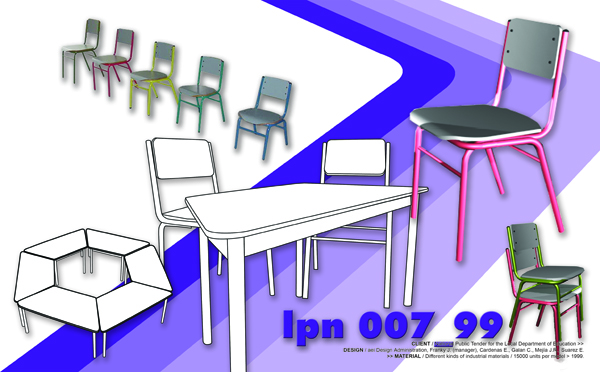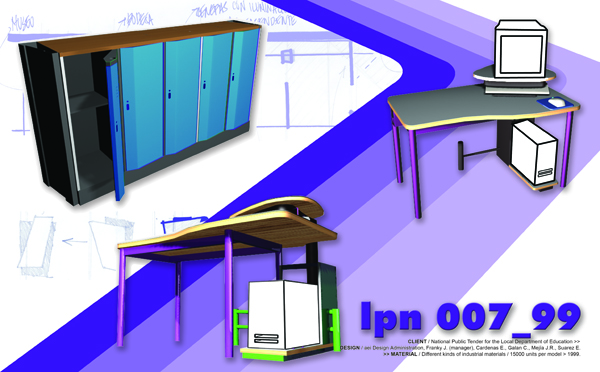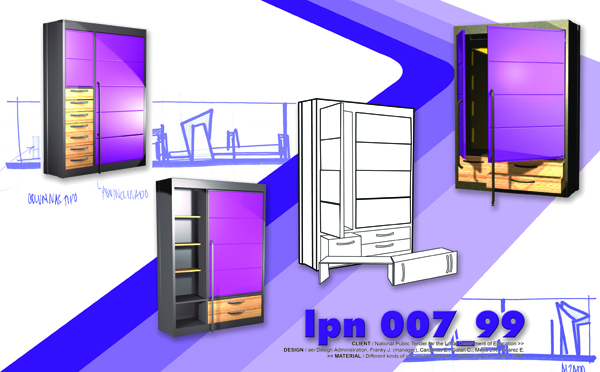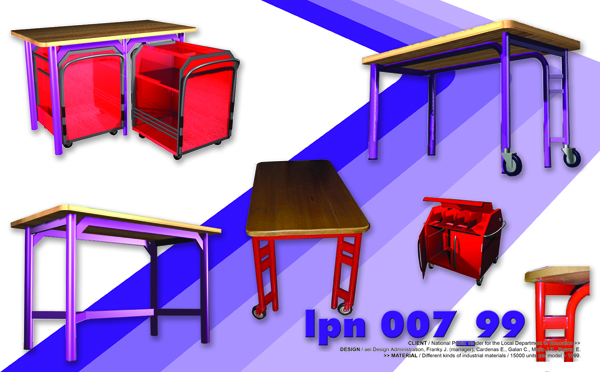Blog
Case Study 05: Industrial design as a tool to improve the learning strategies in the public schools in Bogota Colombia.
 Client: Bogota City Hall (Alcaldía de Bogotá & Secretaría de Educación del Distrito Bogotá)
Client: Bogota City Hall (Alcaldía de Bogotá & Secretaría de Educación del Distrito Bogotá)
Design & Engineering team: aei Gestión de Diseño, Franky J. (director), Cardenas E., Galan C., Mejía J.R. and Suarez E.
Project date & place: 1999 – 2000 The Netherlands.
Project scope: this set of furniture was and is used in 24 public schools in Bogota for more than 2.5 millions of students, teachers and staff.
Key words: Base of the pyramid, Human centered design, New Product Development.
Methods used: Human centered design approach and New Product Development strategies.
PROJECT OVERVIEW
The SED (Secretaria de Educación del Distrito) is part of the Bogota City Hall acting as an autonomous organization that aims to guide and lead the development of politics, plans and programs in order to ensure the access to the knowledge and guarantee an integral education for its citizens. As part of the City Master Plan at the beginning of 1999 the SED built a set of 15 public schools.

PROCESS AND GENERAL APPROACH
The SED developed those 15 projects with different architect and engineering agencies which were detailing the buildings when the designer Franky was called to present a proposal in order to design the furniture for those schools. At the same time a group of teachers and experts in pedagogy have considered the new range of learning strategies.
The proposal had answered the new learning strategies guaranteeing the access, quality and equality of the educational system in different ways and levels at the Colombian capital city.
DESCRIPTION OF THE FINAL DESIGN

Franky called and leaded a multidisciplinary team -formed by engineers, designers and ergonomists- through this complex and massive project (because of its size and impact). The project was divided in three phases; the first one was the deconstruction of the current furniture concluding that the SED must design a new system of furniture in order to answer the demands of the users and stakeholders.
 The second phase included the conceptualization, design, development, control of production and installation of the new furniture system consists of:
The second phase included the conceptualization, design, development, control of production and installation of the new furniture system consists of:
- a set of furniture for classrooms (tables and chairs in five different sizes),
- furniture for the library (cabinets and lockers),
- laboratories,
- teacher rooms, and
- computer rooms.


SUPPORTING MATERIAL
- Some images (CR: Cesar Galán) about the project implementation here: [nggallery id=14]
- http://printcolombino.4mg.com/cesargalansitio/sitio/aei/index.html
RELATED POSTS
Javier Ricardo Mejia Sarmiento.

